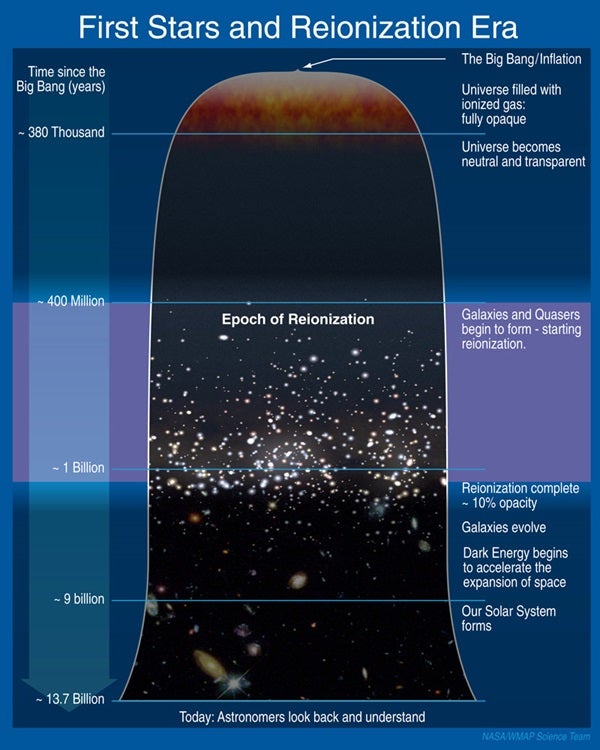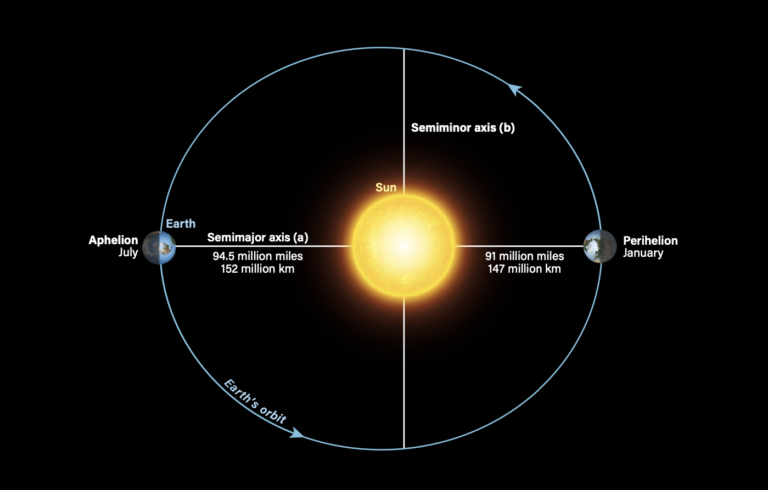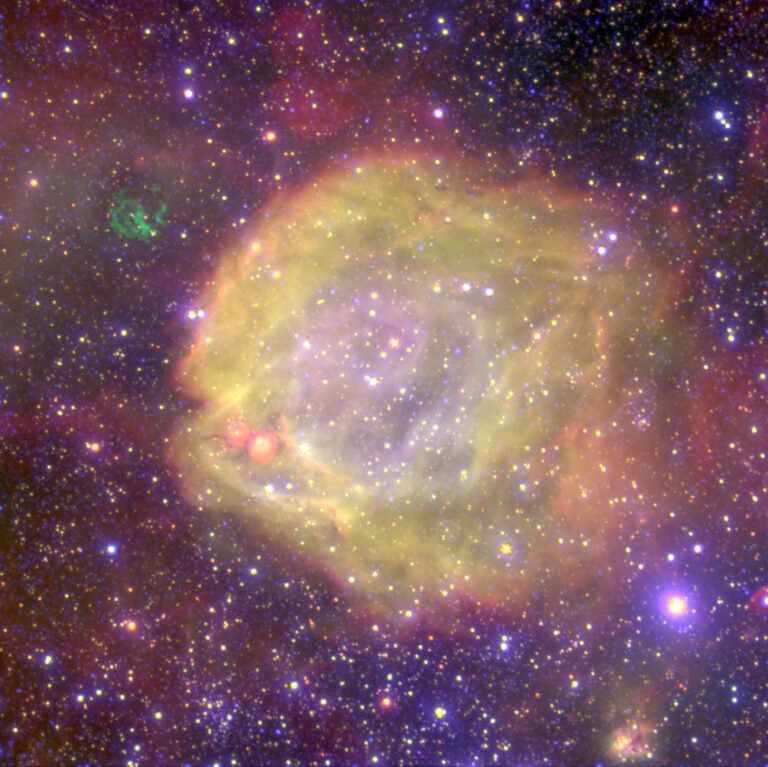A European team of astronomers using the European Southern Observatory’s (ESO) Very Large Telescope (VLT) has measured the distance to the most remote galaxy so far. By carefully analyzing the faint glow of the galaxy, they have found that they are seeing it when the universe was only about 600 million years old. These are the first confirmed observations of a galaxy whose light is clearing the opaque hydrogen fog that filled the cosmos at this early time.
“Using the ESO VLT, we have confirmed that a galaxy spotted earlier using Hubble is the most remote object identified so far in the universe,” said Matt Lehnert from the Observatoire de Paris. “The power of the VLT and its SINFONI spectrograph allows us to actually measure the distance to this very faint galaxy, and we find that we are seeing it when the universe was less than 600 million years old.”
Studying these first galaxies is extremely difficult. By the time their initially brilliant light gets to Earth, they appear faint and small. Furthermore, this dim light falls mostly in the infrared part of the spectrum because its wavelength has been stretched by the expansion of the universe — an effect known as redshift. To make matters worse, less than a billion years after the Big Bang, the universe was not fully transparent, and much of it was filled with a hydrogen fog that absorbed the fierce ultraviolet light from young galaxies. The period when the fog was still being cleared by this ultraviolet light is known as the era of reionization.
Despite these challenges, the new Wide Field Camera 3 on the NASA/ESA Hubble Space Telescope discovered several robust candidate objects in 2009 that were thought to be galaxies shining in the era of reionization. Confirming the distances to such faint and remote objects is an enormous challenge and can only reliably be done using spectroscopy from very large ground-based telescopes by measuring the redshift of the galaxy’s light.
“After the announcement of the candidate galaxies from Hubble, we did a quick calculation, and we were excited to find that the immense light-collecting power of the VLT, when combined with the sensitivity of the infrared spectroscopic instrument, SINFONI, and a very long exposure time might just allow us to detect the faint glow from one of these remote galaxies and to measure its distance,” said Matt Lehnert.
On special request by ESO’s director general, they obtained telescope time on the VLT and observed a candidate galaxy called UDFy-38135539 for 16 hours. After 2 months of careful analysis and testing of their results, the team found that it had clearly detected the faint glow from hydrogen at a redshift of 8.6, which makes this galaxy the most distant object ever confirmed by spectroscopy. A redshift of 8.6 corresponds to a galaxy seen just 600 million years after the Big Bang.
“Measuring the redshift of the most distant galaxy so far is very exciting in itself, but the astrophysical implications of this detection are even more important,” said Nicole Nesvadba from Institut d’Astrophysique Spatiale, France. This is the first time we know for sure that we are looking at one of the galaxies that cleared out the fog which had filled the very early universe.”
One of the surprising things about this discovery is that the glow from UDFy-38135539 seems not to be strong enough on its own to clear out the hydrogen fog. “There must be other galaxies, probably fainter and less massive nearby companions of UDFy-38135539, which also helped make the space around the galaxy transparent,” said Mark Swinbank from Durham University, United Kingdom. “Without this additional help, the light from the galaxy, no matter how brilliant, would have been trapped in the surrounding hydrogen fog, and we would not have been able to detect it.”
“Studying the era of reionization and galaxy formation is pushing the capability of current telescopes and instruments to the limit, but this is just the type of science that will be routine when ESO’s European Extremely Large Telescope — which will be the biggest optical and near infrared telescope in the world — becomes operational,” said Jean-Gabriel Cuby from Laboratoire d’Astrophysique de Marseille, France.










